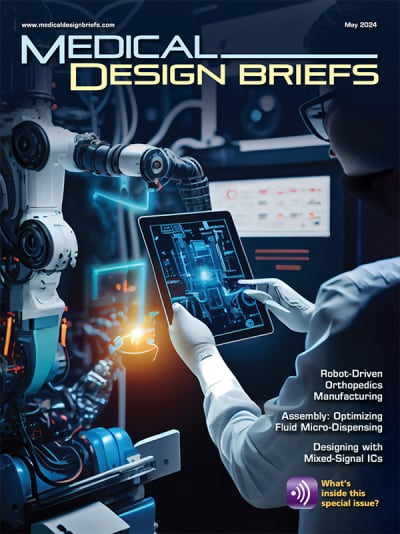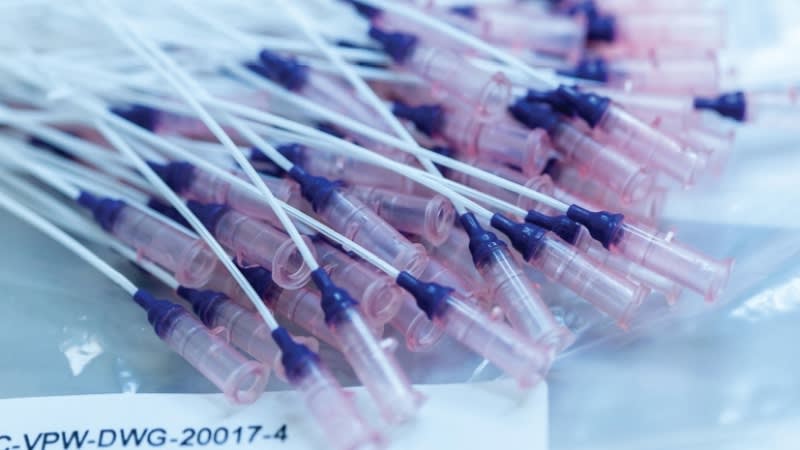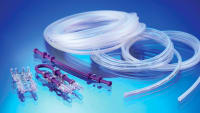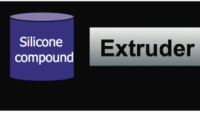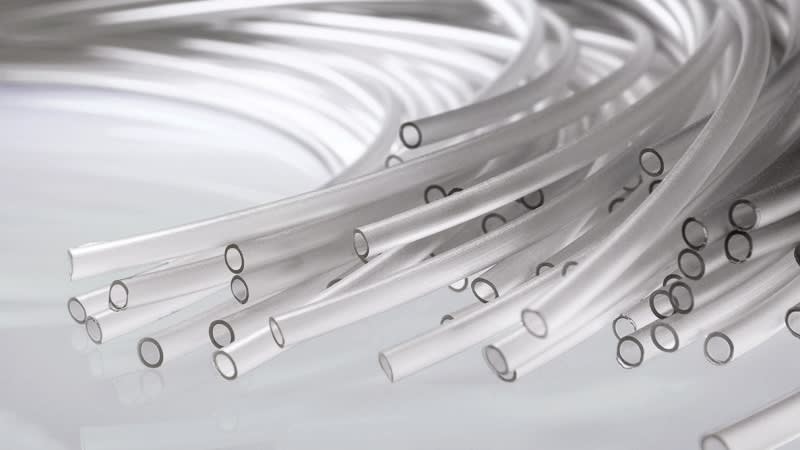Material performance can be important in any application, but in medical equipment and devices, with lives and health at stake, it can be absolutely critical. A particular challenge in medical applications is that many components may have to be tough enough to withstand challenges like heat, pressure, and chemical exposure while, at the same time, being comfortable enough for physical contact with a patient. Not many materials can meet such seemingly conflicting demands, but liquid silicone rubber (LSR) can.

Range of Capabilities
At the same time, LSR is approved for medical applications in which it will come in contact with skin. Its stability and hydrophobic—water repellent—nature protects the cured material from being affected by skin. At the same time, and unlike materials like latex, LSR is nonallergenic, so skin is not affected by the plastic. It is hygienic, resisting the growth of bacteria and fungi, and the softness and flexibility of the material helps ensure patient comfort while its water-repellant nature prevents it from sticking to wounds.
In addition to tolerating heat, LSR stays flexible at very low temperatures. The exact degree of flexibility varies with the compound, but can be very high; LR3003/50, for example, has an elongation at break of 480 percent. LSR also has low compression set—low permanent deformation when a force is applied and removed—making it ideal for elastomers and an excellent choice for seals. LSR stands up well to UV radiation, and the stability of the cured material gives molded parts a very long shelf life. Compared to thermoplastic elastomers (TPE) like Santoprene™, LSR has been described as “TPE on steroids.”
The material is not without tradeoffs. LSR can be significantly more expensive than other resins, and the cycle time for molding is longer than that of thermoplastics. But it also allows multiple parts to be combined, reducing production costs. In short, for the right medical applications LSR’s capabilities are hard to beat.
A Variety of Applications

Resin Flow
The unique benefits of LSR go beyond its performance in molded parts to the molding process itself. LSR flows extremely well in a mold, allowing the formation of thin walls and fine details. It flows particularly well because it is a shear thinning fluid, also called a pseudoplastic. Shear thinning is the reduction of a fluid’s viscosity when shear stress (like that caused by injection into a mold) is applied. An everyday example of this behavior can be seen in ketchup, which is, like LSR, a pseudoplastic, as compared to honey, which is not.

Shear thinning improves flow of LSR through thin-walled areas of the mold, reducing the need to maintain even wall thickness throughout a part as is required when molding thermoplastics. This allows the use of very thin walls and the production of small or intricately detailed parts. On the other hand, because LSR flows so easily in a mold, it also has an increased tendency to flash—to seep into spaces where mold halves meet—creating unwanted vestiges that must be removed by secondary operations. Flash can be minimized or eliminated through careful mold design but is still a concern in part design and in control of the molding process.
Other Mold Considerations
Design guidelines for LSR are generally more relaxed than those for thermoplastics. Its flexibility allows safe removal from molds without necessarily requiring draft, side actions, inserts, or other mold modifications that a rigid material would need. While part surfaces that are parallel to the direction of mold opening are less likely to be damaged by scraping against the mold wall during ejection, some draft is typically required to allow milling of the mold, but about one degree per inch of mold depth is usually sufficient. For similar reasons, some undercuts that would require side actions or pick-outs if a hard plastic were being used can be produced in LSR in simple two-part molds. Often, rubbery LSR parts can be “peeled” out of the mold. The real constraint on undercuts in LSR is whether they can be milled.
Parts molded of LSR may shrink somewhat after being removed from the mold but, unlike thermoplastics, do not shrink significantly in the mold. This can affect mold design and ejection, since parts don’t cling to cores as thermoplastics do. Instead they tend to stick to the mold half with the greatest surface area. This can result in a part being partially pulled out of a mold half and left hanging after the mold opens. Working with an experienced molder can help prevent this sort of problem. (See Figure 2)
Because thermoset material is solidified by heat and is mostly cured before it cools, sink is not a problem, which means that part features can be made thicker than would be wise if the material were thermoplastic. On the other hand, the relatively high cost of LSR resin is a good reason not to make features thicker than they need to be.
Prototyping
In competitive, fast moving markets, products need to get to market quickly and perform flawlessly, and that means prototyping and testing throughout the development process. For some products and resins, early-phase testing can use “stand-in” materials produced using additive processes like stereolithography, fused deposition modeling, or selective laser sintering, each of which uses a limited range of resin types. The challenge for prototyping LSR is that there aren’t really viable stand-in materials. Hard plastics can’t duplicate most of LSR’s characteristics and even the most flexible thermoplastic resins can’t match LSR’s flow characteristics in a mold. At the same time, the very characteristics that make LSR right for the application make it virtually impossible to form using most short-run prototyping processes; it’s too soft to machine and, being a thermoset, can’t be laid down in layers. The only real way to produce testable prototypes is by injection molding. (See Figure 3)
Fortunately, molding providers can now produce quick-turn molded prototypes in a number of different LSR resins. Sophisticated algorithms that turn 3D CAD models into toolpaths for milling aluminum molds have slashed mold production times down from weeks to days and reduced costs enough to justify molding as a prototyping process. Molds can be used to produce parts in different LSR resins for comparison testing to determine which performs best in the application. These fast, affordable molded prototypes can be used for early-stage functional testing without slowing the development process, and, once a design has been approved, the same molds can be used to begin making production parts.
The unique flexibility, biocompatibility, and heat resistance of liquid silicone rubber make it ideal for a variety of medical applications. But the need to pass stringent clinical trials can slow down product development, especially if developers are working with new or unfamiliar materials. In the past, the cost and complexity of molding LSR has delayed functional testing, but new production capabilities now allow real LSR parts to be tested earlier than ever before, let developers take full advantage of the material’s capabilities, and help speed products to market.
This article was written by Jeffrey Schipper, LSR Product Manager, Proto Labs, Maple Plain, MN. For more information, Click Here " target="_blank" rel="noopener noreferrer">http://info.hotims.com/49749-163. MD&M Chicago, Booth 423
